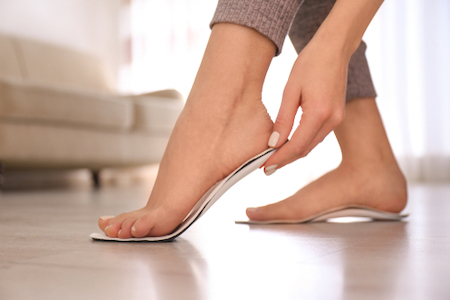The mystery of flat feet: exploration from science to daily life
In our daily steps, our feet play an important role in supporting the body and pushing forward. The seemingly ordinary land on the sole of the foot - the arch of the foot, is the physiological miracle that makes all this possible. However, not everyone's arch of the foot can perfectly complete this mission. Flat feet is such a common but often misunderstood phenomenon. Today, let us explore the mystery of flat feet in a simple way.
What is flat feet?
Flat feet, medically known as "flat feet", is an abnormal foot structure, manifested as a collapsed or missing arch when standing. Under normal circumstances, a natural arch structure will form in the center of the sole of the foot. This arch can absorb the pressure during walking and running, and provide stability and elasticity. But for flatfoot patients, this arch is not obvious or disappears completely, resulting in an increase in the area of the sole of the foot in contact with the ground.
Causes of flat feet
Flat feet can be caused by many reasons, such as genetic factors, acquired habits, overweight or muscle and ligament injuries. In childhood, the arch of the foot may not be fully formed because the bones have not yet matured. This is called physiological flat feet, and most of them will improve on their own as they age. Flat feet that appear in adulthood are mostly pathological and need attention and appropriate treatment.
Symptoms and Impacts
Not all flat feet cause symptoms, and many people can live without discomfort. However, some patients may experience problems such as ankle pain, tight calf muscles, abnormal gait (such as pigeon-toed), and increased fatigue after standing or walking for a long time. In severe cases, it may also affect the alignment of the knees, hip joints, and even the spine, causing a chain reaction of physical discomfort.
Diagnosis and Treatment
The diagnosis of flat feet is usually based on physical examinations, including observing footprints, performing gait analysis, and X-rays. For asymptomatic flat feet, no special treatment is generally required, and the focus is on prevention and health care. Wearing suitable shoes and insoles and doing regular foot strengthening exercises can help maintain foot health.
For symptomatic flat feet, treatment options vary, including custom orthotics to support the arch, physical therapy to strengthen the foot muscles, wearing specific athletic shoes to reduce impact, and considering surgical intervention in extreme cases.
Management in daily life
Choose the right shoes: Choose shoes with good support and cushioning, and avoid wearing high heels or completely flat shoes.
Exercise regularly: Strengthen the muscles around the ankle, such as heel raises and toe grip exercises, to enhance the stability of the arch.
Rest appropriately: After standing or walking for a long time, rest appropriately and elevate your feet to reduce the pressure on the foot.
Weight management: Maintain a healthy weight to reduce the extra burden on the foot.
Remember that everyone's situation is unique, and the most important thing when facing flat feet is to find a management and treatment plan that suits you. If you have any questions or symptoms worsen, please consult a professional medical staff in time. With the right knowledge and proper care, flat feet do not mean a reduced quality of life, but a reminder to care and understand our bodies more.
